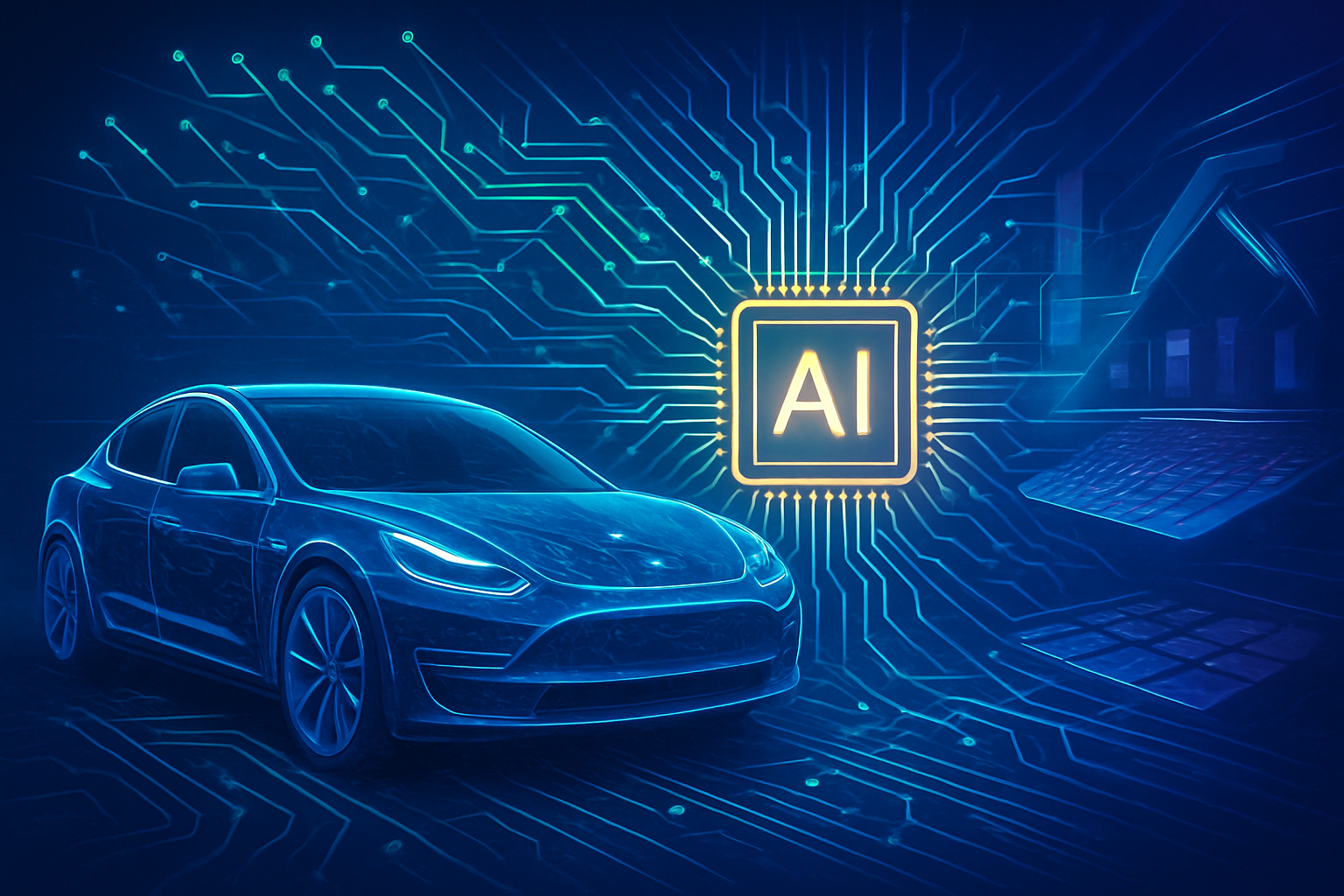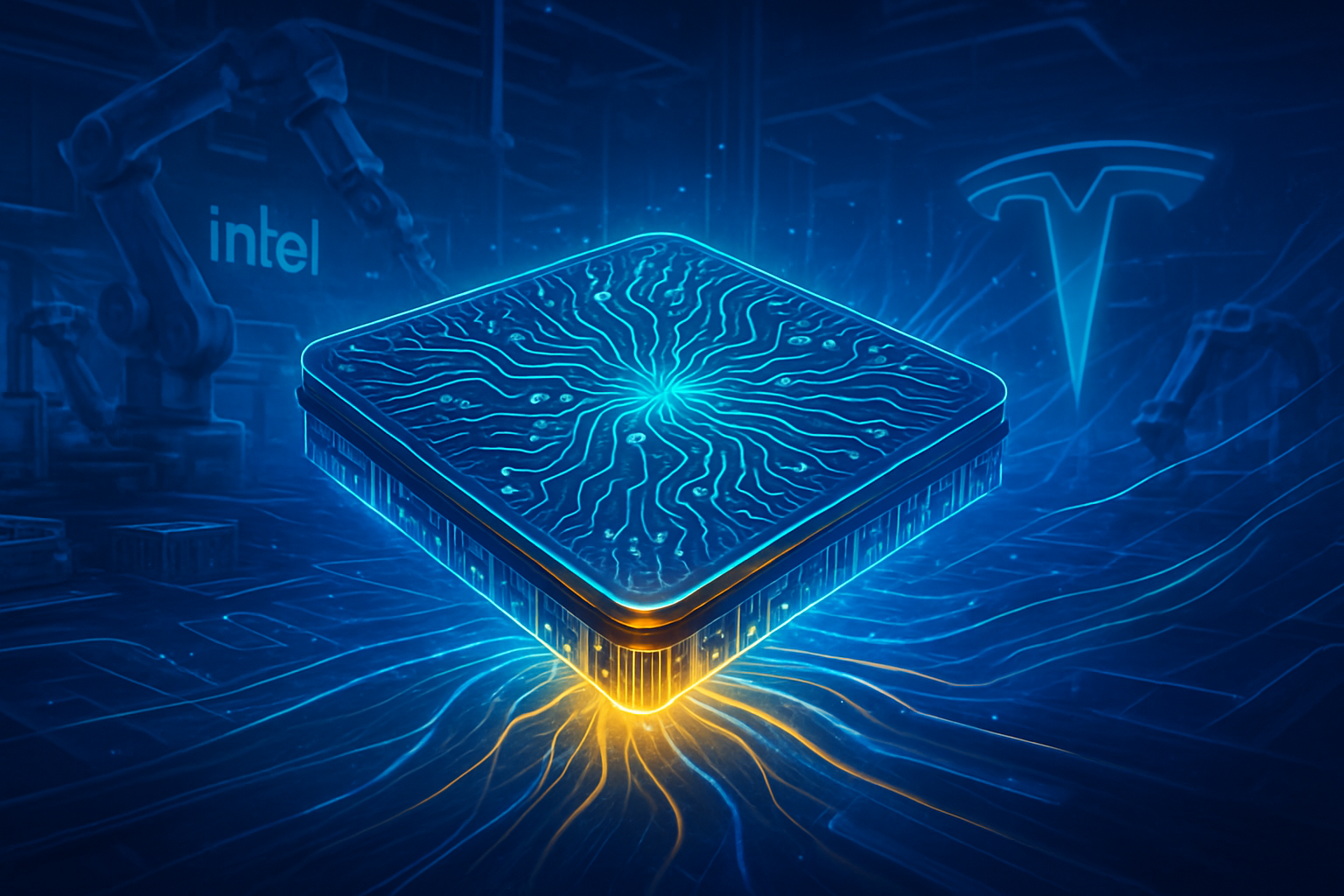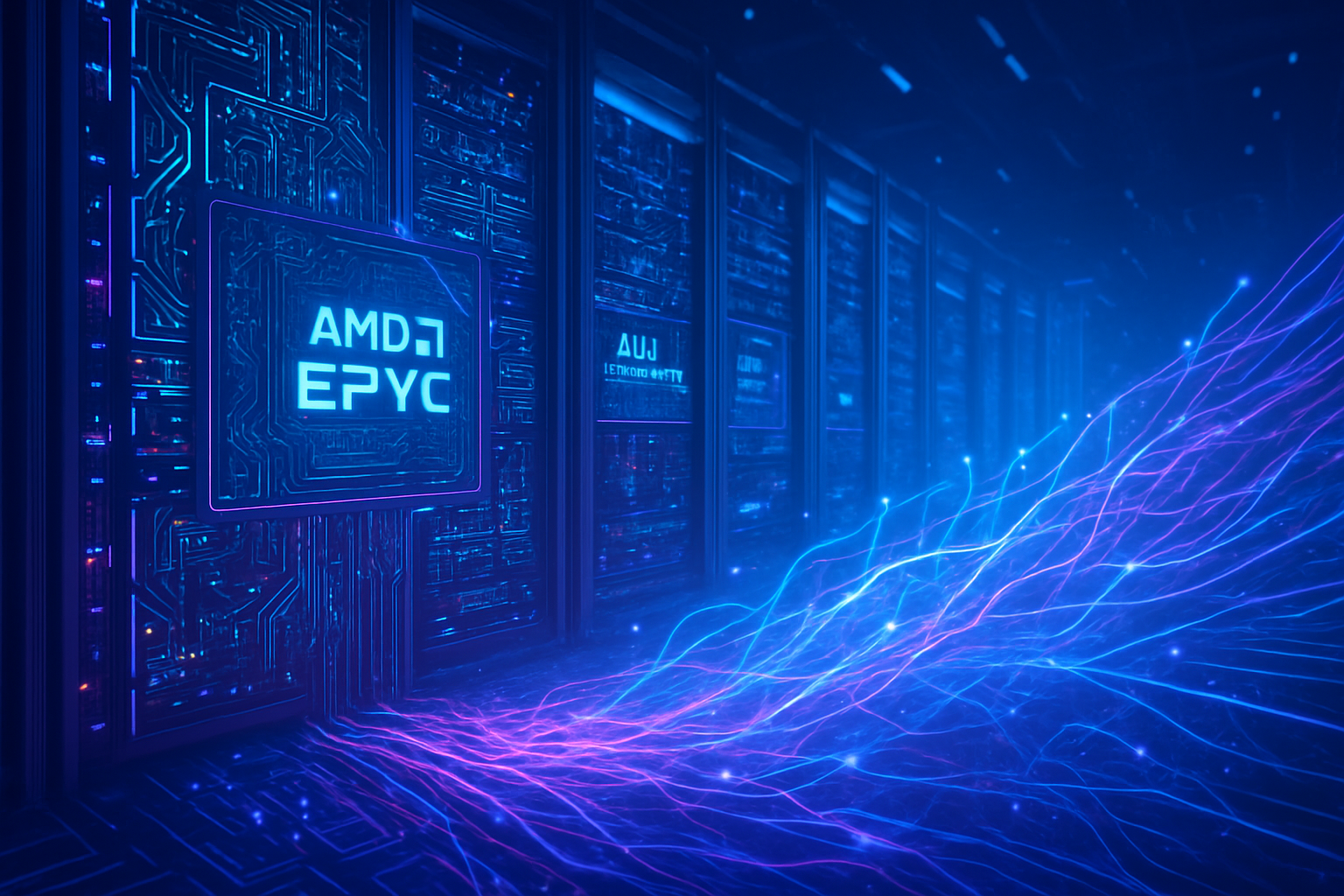The age of artificial intelligence is inextricably linked to the relentless march of semiconductor innovation. These tiny, yet incredibly powerful microchips—ranging from specialized Graphics Processing Units (GPUs) and Tensor Processing Units (TPUs) to Neural Processing Units (NPUs) and Application-Specific Integrated Circuits (ASICs)—are the fundamental bedrock upon which the entire AI ecosystem is built. Without their immense computational power and efficiency, the breakthroughs in machine learning, natural language processing, and computer vision that define modern AI would remain theoretical aspirations.
The immediate significance of semiconductors in AI is profound and multifaceted. In large-scale cloud AI, these chips are the workhorses for training complex machine learning models and large language models, powering the expansive data centers that form the "beating heart" of the AI economy. Simultaneously, at the "edge," semiconductors enable real-time AI processing directly on devices like autonomous vehicles, smart wearables, and industrial IoT sensors, reducing latency, enhancing privacy, and minimizing reliance on constant cloud connectivity. This symbiotic relationship—where AI's rapid evolution fuels demand for ever more powerful and efficient semiconductors, and in turn, semiconductor advancements unlock new AI capabilities—is driving unprecedented innovation and projected exponential growth in the semiconductor industry.
The Evolution of AI Hardware: From General-Purpose to Hyper-Specialized Silicon
The journey of AI hardware began with Central Processing Units (CPUs), the foundational general-purpose processors. In the early days, CPUs handled basic algorithms, but their architecture, optimized for sequential processing, proved inefficient for the massively parallel computations inherent in neural networks. This limitation became glaringly apparent with tasks like basic image recognition, which required thousands of CPUs.
The first major shift came with the adoption of Graphics Processing Units (GPUs). Originally designed for rendering images by simultaneously handling numerous operations, GPUs were found to be exceptionally well-suited for the parallel processing demands of AI and Machine Learning (ML) tasks. This repurposing, significantly aided by NVIDIA (NASDAQ: NVDA)'s introduction of CUDA in 2006, made GPU computing accessible and led to dramatic accelerations in neural network training, with researchers observing speedups of 3x to 70x compared to CPUs. Modern GPUs, like NVIDIA's A100 and H100, feature thousands of CUDA cores and specialized Tensor Cores optimized for mixed-precision matrix operations (e.g., TF32, FP16, BF16, FP8), offering unparalleled throughput for deep learning. They are also equipped with High Bandwidth Memory (HBM) to prevent memory bottlenecks.
As AI models grew in complexity, the limitations of even GPUs, particularly in energy consumption and cost-efficiency for specific AI operations, led to the development of specialized AI accelerators. These include Tensor Processing Units (TPUs), Neural Processing Units (NPUs), and Application-Specific Integrated Circuits (ASICs). Google (NASDAQ: GOOGL)'s TPUs, for instance, are custom-developed ASICs designed around a matrix computation engine and systolic arrays, making them highly adept at the massive matrix operations frequent in ML. They prioritize bfloat16 precision and integrate HBM for superior performance and energy efficiency in training. NPUs, on the other hand, are domain-specific processors primarily for inference workloads at the edge, enabling real-time, low-power AI processing on devices like smartphones and IoT sensors, supporting low-precision arithmetic (INT8, INT4). ASICs offer maximum efficiency for particular applications by being highly customized, resulting in faster processing, lower power consumption, and reduced latency for their specific tasks.
Current semiconductor approaches differ significantly from previous ones in several ways. There's a profound shift from general-purpose, von Neumann architectures towards highly parallel and specialized designs built for neural networks. The emphasis is now on massive parallelism, leveraging mixed and low-precision arithmetic to reduce memory usage and power consumption, and employing High Bandwidth Memory (HBM) to overcome the "memory wall." Furthermore, AI itself is now transforming chip design, with AI-powered Electronic Design Automation (EDA) tools automating tasks, improving verification, and optimizing power, performance, and area (PPA), cutting design timelines from months to weeks. The AI research community and industry experts widely recognize these advancements as a "transformative phase" and the dawn of an "AI Supercycle," emphasizing the critical need for continued innovation in chip architecture and memory technology to keep pace with ever-growing model sizes.
The AI Semiconductor Arms Race: Redefining Industry Leadership
The rapid advancements in AI semiconductors are profoundly reshaping the technology industry, creating new opportunities and challenges for AI companies, tech giants, and startups alike. This transformation is marked by intense competition, strategic investments in custom silicon, and a redefinition of market leadership.
Chip Manufacturers like NVIDIA (NASDAQ: NVDA) and Advanced Micro Devices (NASDAQ: AMD) are experiencing unprecedented demand for their GPUs. NVIDIA, with its dominant market share (80-90%) and mature CUDA software ecosystem, currently holds a commanding lead. However, this dominance is catalyzing a strategic shift among its largest customers—the tech giants—towards developing their own custom AI silicon to reduce dependency and control costs. Intel (NASDAQ: INTC) is also aggressively pushing its Gaudi line of AI chips and leveraging its Xeon 6 CPUs for AI inferencing, particularly at the edge, while also pursuing a foundry strategy. AMD is gaining traction with its Instinct MI300X GPUs, adopted by Microsoft (NASDAQ: MSFT) for its Azure cloud platform.
Hyperscale Cloud Providers are at the forefront of this transformation, acting as both significant consumers and increasingly, producers of AI semiconductors. Google (NASDAQ: GOOGL) has been a pioneer with its Tensor Processing Units (TPUs) since 2015, used internally and offered via Google Cloud. Its recently unveiled seventh-generation TPU, "Ironwood," boasts a fourfold performance increase for AI inferencing, with AI startup Anthropic committing to use up to one million Ironwood chips. Microsoft (NASDAQ: MSFT) is making massive investments in AI infrastructure, committing $80 billion for fiscal year 2025 for AI-ready data centers. While a large purchaser of NVIDIA's GPUs, Microsoft is also developing its own custom AI accelerators, such as the Maia 100, and cloud CPUs, like the Cobalt 100, for Azure. Similarly, Amazon (NASDAQ: AMZN)'s AWS is actively developing custom AI chips, Inferentia for inference and Trainium for training AI models. AWS recently launched "Project Rainier," featuring nearly half a million Trainium2 chips, which AI research leader Anthropic is utilizing. These tech giants leverage their vast resources for vertical integration, aiming for strategic advantages in performance, cost-efficiency, and supply chain control.
For AI Software and Application Startups, advancements in AI semiconductors offer a boon, providing increased accessibility to high-performance AI hardware, often through cloud-based AI services. This democratization of compute power lowers operational costs and accelerates development cycles. However, AI Semiconductor Startups face high barriers to entry due to substantial R&D and manufacturing costs, though cloud-based design tools are lowering these barriers, enabling them to innovate in specialized niches. The competitive landscape is an "AI arms race," with potential disruption to existing products as the industry shifts from general-purpose to specialized hardware, and AI-driven tools accelerate chip design and production.
Beyond the Chip: Societal, Economic, and Geopolitical Implications
AI semiconductors are not just components; they are the very backbone of modern AI, driving unprecedented technological progress, economic growth, and societal transformation. This symbiotic relationship, where AI's growth drives demand for better chips and better chips unlock new AI capabilities, is a central engine of global progress, fundamentally re-architecting computing with an emphasis on parallel processing, energy efficiency, and tightly integrated hardware-software ecosystems.
The impact on technological progress is profound, as AI semiconductors accelerate data processing, reduce power consumption, and enable greater scalability for AI systems, pushing the boundaries of what's computationally possible. This is extending or redefining Moore's Law, with innovations in advanced process nodes (like 2nm and 1.8nm) and packaging solutions. Societally, these advancements are transformative, enabling real-time health monitoring, enhancing public safety, facilitating smarter infrastructure, and revolutionizing transportation with autonomous vehicles. The long-term impact points to an increasingly autonomous and intelligent future. Economically, the impact is substantial, leading to unprecedented growth in the semiconductor industry. The AI chip market, which topped $125 billion in 2024, is projected to exceed $150 billion in 2025 and potentially reach $400 billion by 2027, with the overall semiconductor market heading towards a $1 trillion valuation by 2030. This growth is concentrated among a few key players like NVIDIA (NASDAQ: NVDA), driving a "Foundry 2.0" model emphasizing technology integration platforms.
However, this transformative era also presents significant concerns. The energy consumption of advanced AI models and their supporting data centers is staggering. Data centers currently consume 3-4% of the United States' total electricity, projected to triple to 11-12% by 2030, with a single ChatGPT query consuming roughly ten times more electricity than a typical Google Search. This necessitates innovations in energy-efficient chip design, advanced cooling technologies, and sustainable manufacturing practices. The geopolitical implications are equally significant, with the semiconductor industry being a focal point of intense competition, particularly between the United States and China. The concentration of advanced manufacturing in Taiwan and South Korea creates supply chain vulnerabilities, leading to export controls and trade restrictions aimed at hindering advanced AI development for national security reasons. This struggle reflects a broader shift towards technological sovereignty and security, potentially leading to an "AI arms race" and complicating global AI governance. Furthermore, the concentration of economic gains and the high cost of advanced chip development raise concerns about accessibility, potentially exacerbating the digital divide and creating a talent shortage in the semiconductor industry.
The current "AI Supercycle" driven by AI semiconductors is distinct from previous AI milestones. Historically, semiconductors primarily served as enablers for AI. However, the current era marks a pivotal shift where AI is an active co-creator and engineer of the very hardware that fuels its own advancement. This transition from theoretical AI concepts to practical, scalable, and pervasive intelligence is fundamentally redefining the foundation of future AI, arguably as significant as the invention of the transistor or the advent of integrated circuits.
The Horizon of AI Silicon: Beyond Moore's Law
The future of AI semiconductors is characterized by relentless innovation, driven by the increasing demand for more powerful, energy-efficient, and specialized chips. In the near term (1-3 years), we expect to see continued advancements in advanced process nodes, with mass production of 2nm technology anticipated to commence in 2025, followed by 1.8nm (Intel (NASDAQ: INTC)'s 18A node) and Samsung (KRX: 005930)'s 1.4nm by 2027. High-Bandwidth Memory (HBM) will continue its supercycle, with HBM4 anticipated in late 2025. Advanced packaging technologies like 3D stacking and chiplets will become mainstream, enhancing chip density and bandwidth. Major tech companies will continue to develop custom silicon chips (e.g., AWS Graviton4, Azure Cobalt, Google Axion), and AI-driven chip design tools will automate complex tasks, including translating natural language into functional code.
Looking further ahead into long-term developments (3+ years), revolutionary changes are expected. Neuromorphic computing, aiming to mimic the human brain for ultra-low-power AI processing, is becoming closer to reality, with single silicon transistors demonstrating neuron-like functions. In-Memory Computing (IMC) will integrate memory and processing units to eliminate data transfer bottlenecks, significantly improving energy efficiency for AI inference. Photonic processors, using light instead of electricity, promise higher speeds, greater bandwidth, and extreme energy efficiency, potentially serving as specialized accelerators. Even hybrid AI-quantum systems are on the horizon, with companies like International Business Machines (NYSE: IBM) focusing efforts in this sector.
These advancements will enable a vast array of transformative AI applications. Edge AI will intensify, enabling real-time, low-power processing in autonomous vehicles, industrial automation, robotics, and medical diagnostics. Data centers will continue to power the explosive growth of generative AI and large language models. AI will accelerate scientific discovery in fields like astronomy and climate modeling, and enable hyper-personalized AI experiences across devices.
However, significant challenges remain. Energy efficiency is paramount, as data centers' electricity consumption is projected to triple by 2030. Manufacturing costs for cutting-edge chips are incredibly high, with fabs costing up to $20 billion. The supply chain remains vulnerable due to reliance on rare materials and geopolitical tensions. Technical hurdles include memory bandwidth, architectural specialization, integration of novel technologies like photonics, and precision/scalability issues. A persistent talent shortage in the semiconductor industry and sustainability concerns regarding power and water demands also need to be addressed. Experts predict a sustained "AI Supercycle" driven by diversification of AI hardware, pervasive integration of AI, and an unwavering focus on energy efficiency.
The Silicon Foundation: A New Era for AI and Beyond
The AI semiconductor market is undergoing an unprecedented period of growth and innovation, fundamentally reshaping the technological landscape. Key takeaways highlight a market projected to reach USD 232.85 billion by 2034, driven by the indispensable role of specialized AI chips like GPUs, TPUs, NPUs, and HBM. This intense demand has reoriented industry focus towards AI-centric solutions, with data centers acting as the primary engine, and a complex, critical supply chain underpinning global economic growth and national security.
In AI history, these developments mark a new epoch. While AI's theoretical underpinnings have existed for decades, its rapid acceleration and mainstream adoption are directly attributable to the astounding advancements in semiconductor chips. These specialized processors have enabled AI algorithms to process vast datasets at incredible speeds, making cost-effective and scalable AI implementation possible. The synergy between AI and semiconductors is not merely an enabler but a co-creator, redefining what machines can achieve and opening doors to transformative possibilities across every industry.
The long-term impact is poised to be profound. The overall semiconductor market is expected to reach $1 trillion by 2030, largely fueled by AI, fostering new industries and jobs. However, this era also brings challenges: staggering energy consumption by AI data centers, a fragmented geopolitical landscape surrounding manufacturing, and concerns about accessibility and talent shortages. The industry must navigate these complexities to realize AI's full potential.
In the coming weeks and months, watch for continued announcements from major chipmakers like NVIDIA (NASDAQ: NVDA), AMD (NASDAQ: AMD), Intel (NASDAQ: INTC), and Samsung Electronics (KRX: 005930) regarding new AI accelerators and advanced packaging technologies. Google's 7th-gen Ironwood TPU is also expected to become widely available. Intensified focus on smaller process nodes (3nm, 2nm) and innovations in HBM and advanced packaging will be crucial. The evolving geopolitical landscape and its impact on supply chain strategies, as well as developments in Edge AI and efforts to ease cost bottlenecks for advanced AI models, will also be critical indicators of the industry's direction.
This content is intended for informational purposes only and represents analysis of current AI developments.
TokenRing AI delivers enterprise-grade solutions for multi-agent AI workflow orchestration, AI-powered development tools, and seamless remote collaboration platforms.
For more information, visit https://www.tokenring.ai/.









